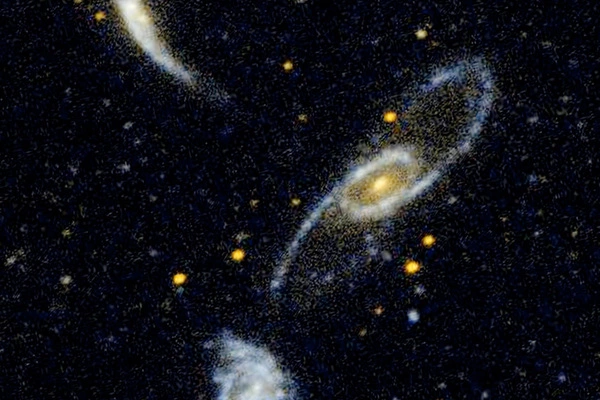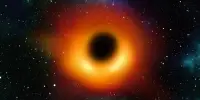Dark energy and dark matter are two of the most mysterious and least understood aspects of our universe. Dark energy is thought to be the force driving the accelerating expansion of the universe, while dark matter is believed to make up the majority of the universe’s mass. Despite their importance, the exact nature of these two phenomena is still not well understood and is the subject of ongoing research.
The most precise measurements of dark energy and dark matter to date have been made using a variety of techniques, including observations of large-scale structure, gravitational lensing, and the cosmic microwave background radiation. However, the exact values and properties of dark energy and dark matter are still not known with high precision, and further research is needed to better understand these mysterious components of our universe.
Analyzing supernova explosions for more than two decades strengthens modern cosmological theories and reenergizes efforts to answer fundamental questions.
Astrophysicists have conducted a powerful new analysis that places the most precise limits on the universe’s composition and evolution to date. With this analysis, dubbed Pantheon+, cosmologists have reached a fork in the road.
Pantheon+ concludes that the universe is made up of roughly two-thirds dark energy and one-third matter, mostly in the form of dark matter, and that it has been expanding at an accelerating rate over the last billion years. Pantheon+, on the other hand, cements a major disagreement over the pace of that expansion, which has yet to be resolved.
We expected to find hints to a novel solution to these problems in our dataset, but instead we’re finding that our data rules out many of these options and that the profound discrepancies remain as stubborn as ever.
Dillon Brout
Pantheon+ further closes the door on alternative frameworks accounting for dark energy and dark matter by putting prevailing modern cosmological theories, known as the Standard Model of Cosmology, on even firmer evidentiary and statistical footing. Both are fundamental to the Standard Model of Cosmology, but have yet to be directly detected, making them one of the model’s greatest mysteries. Following up on Pantheon+’s findings, researchers can now conduct more precise observational tests and refine explanations for the apparent cosmos.
“With these Pantheon+ results, we are able to put the most precise constraints on the dynamics and history of the universe to date,” says Dillon Brout, an Einstein Fellow at the Center for Astrophysics | Harvard & Smithsonian. “We’ve combed over the data and can now say with more confidence than ever before how the universe has evolved over the eons and that the current best theories for dark energy and dark matter hold strong.”
Brout is the lead author of a series of papers describing the new Pantheon+ analysis, published jointly today in a special issue of The Astrophysical Journal.

Pantheon+ is based on the largest dataset of its kind, which includes over 1,500 stellar explosions known as Type Ia supernovae. These bright blasts occur when white dwarf stars, which are remnants of stars like our Sun, accumulate too much mass and undergo a runaway thermonuclear reaction. Because Type Ia supernovae outshine entire galaxies, the stellar explosions can be seen at distances of more than 10 billion light years, or roughly three-quarters of the universe’s total age. Given that supernovae have nearly uniform intrinsic brightnesses, scientists can use the explosions’ apparent brightness, which decreases with distance, along with redshift measurements as time and space markers. That information, in turn, reveals how fast the universe expands during different epochs, which is then used to test theories of the fundamental components of the universe.
The breakthrough discovery in 1998 of the universe’s accelerating growth was thanks to a study of Type Ia supernovae in this manner. Scientists attribute the expansion to an invisible energy, therefore monikered dark energy, inherent to the fabric of the universe itself. Subsequent decades of work have continued to compile ever-larger datasets, revealing supernovae across an even wider range of space and time, and Pantheon+ has now brought them together into the most statistically robust analysis to date.
“In many ways, this latest Pantheon+ analysis is a culmination of more than two decades’ worth of diligent efforts by observers and theorists worldwide in deciphering the essence of the cosmos,” says Adam Riess, one of the winners of the 2011 Nobel Prize in Physics for the discovery of the accelerating expansion of the universe and the Bloomberg Distinguished Professor at Johns Hopkins University (JHU) and the Space Telescope Science Institute in Baltimore, Maryland. Riess is also an alum of Harvard University, holding a PhD in astrophysics.
Brout’s interest in cosmology began during his undergraduate studies at JHU, where he was taught and advised by Riess. Brout collaborated with Dan Scolnic, a former PhD student and Riess adviser who is now an assistant professor of physics at Duke University and another co-author on the new series of papers.
Scolnic created the original Pantheon analysis of approximately 1,000 supernovae several years ago. Brout and Scolnic, along with their new Pantheon+ team, have added approximately 50% more supernovae data points in Pantheon+, along with improvements in analysis techniques and addressing potential sources of error, yielding twice the precision of the original Pantheon.
“This leap in both the dataset quality and in our understanding of the physics that underpin it would not have been possible without a stellar team of students and collaborators working diligently to improve every facet of the analysis,” says Brout.
Taking the data as a whole, the new analysis holds that 66.2 percent of the universe manifests as dark energy, with the remaining 33.8 percent being a combination of dark matter and matter. To arrive at even more comprehensive understanding of the constituent components of the universe at different epochs, Brout and colleagues combined Pantheon+ with other strongly evidenced, independent and complementary measures of the large-scale structure of the universe and with measurements from the earliest light in the universe, the cosmic microwave background.
Another significant Pantheon+ result relates to one of modern cosmology’s most important goals: determining the current rate of expansion of the universe, known as the Hubble constant. Combining the Pantheon+ sample with data from Riess’s SH0ES (Supernova H0 for the Equation of State) collaboration yields the most stringent local measurement of the universe’s current expansion rate.
With only 1.3% uncertainty, Pantheon+ and SH0ES discover a Hubble constant of 73.4 kilometers per second per megaparsec. In other words, for every megaparsec, or 3.26 million light years, the analysis estimates that space itself is expanding at more than 160,000 miles per hour in the nearby universe.
However, observations from a different era in the universe’s history suggest a different story. When combined with the current Standard Model of Cosmology, measurements of the universe’s earliest light, the cosmic microwave background, consistently peg the Hubble constant at a rate that is significantly lower than observations made via Type Ia supernovae and other astrophysical markers. The Hubble tension refers to the significant difference between the two methodologies.
The new Pantheon+ and SH0ES datasets heighten this Hubble tension. In fact, the tension has now passed the important 5-sigma threshold (about one-in-a-million odds of arising due to random chance) that physicists use to distinguish between possible statistical flukes and something that must accordingly be understood. Reaching this new statistical level highlights the challenge for both theorists and astrophysicists to try and explain the Hubble constant discrepancy.
“We expected to find hints to a novel solution to these problems in our dataset, but instead we’re finding that our data rules out many of these options and that the profound discrepancies remain as stubborn as ever,” Brout says.
The Pantheon+ results could point to the location of the Hubble solution. “Many recent theories have begun to point to exotic new physics in the very early universe, but such unverified theories must withstand the scientific process, and the Hubble tension remains a major challenge,” Brout says.
Overall, Pantheon+ provides scientists with a comprehensive view of much of cosmic history. The dataset’s earliest, most distant supernovae gleam from 10.7 billion light years away, implying that the universe was roughly a quarter of its current age. Dark matter and its associated gravity slowed the expansion of the universe during that earlier period. This changed dramatically over the next billion years as the influence of dark energy surpassed that of dark matter. Since then, dark energy has flung the contents of the cosmos ever further apart and at an increasing rate.
















